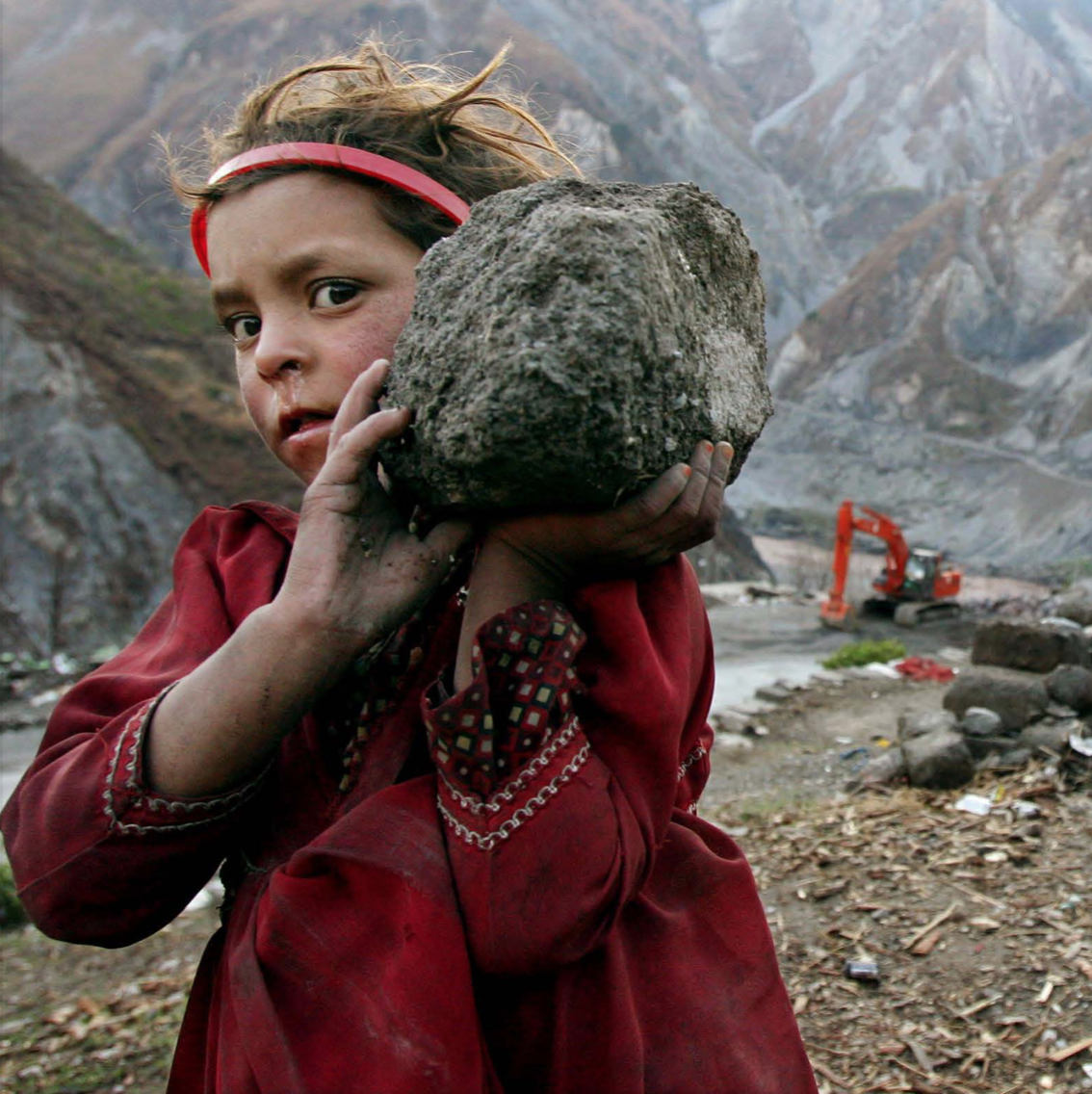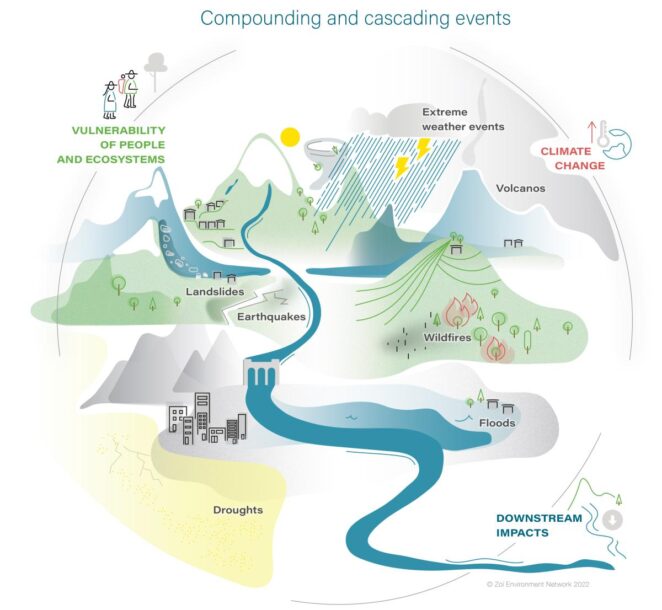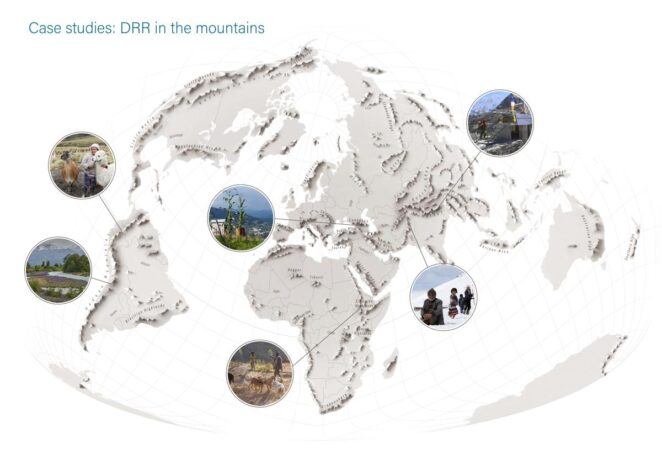Leave No Mountain Behind: Disaster Risk Reduction for All

Introduction
Leave no one behind. That is the promise made by the United Nations in the 2030 Agenda for Sustainable Development in its commitment to eradicate poverty in all its forms, end discrimination and exclusion, and reduce the inequalities and vulnerabilities that leave people behind and undermine the potential of individuals and of humanity as a whole.
Mountain regions cover one quarter of the world’s land surface and are home to more than 1.2 billion people in more than 100 countries, with about one-third of the people living in cities (Ehrlich et al. 2021). Distinguished by rich biological and cultural diversity, mountains provide vital goods and services to those living in the mountains and to those downstream (Adler et al. 2022). The ecosystem services they provide – particularly freshwater – are crucial in the lowlands and beyond.
The IPCC (2022) reports observable climate change impacts with serious consequences for people and ecosystems in many mountain regions – reductions in snow cover extent and duration, loss of glacier mass, thawing of permafrost, increases in the number and size of glacial lakes and changes in seasonal weather patterns, are all related to higher temperatures. The accelerated warming in the mountains in combination with the large population dependent on mountain services, place mountain regions in a unique and sensitive position in the context of sustainable development under climate change (Adler et al. 2022).
Sustainable development in the mountains helps countries and regions adapt to climate change, reduce disaster risks and achieve the Sustainable Development Goals. But mountain communities are often left behind economically and politically. As we celebrate 2022 as the International Year of Sustainable Mountain Development, let’s work to honour our commitment to leave no one behind.
This issue brief explains how development failures and the consequences of climate change are increasing the likelihood of disasters in the mountains, and considers the priorities of the Sendai Framework for Disaster Risk Reduction in light of mountain hazards. Short cases studies illustrate successful strategies across the globe.
This Issue Brief outlines:
- Disaster risk in mountains, including the various hazards mountains prevalent in mountains, the vulnerability of mountain communities, compounding and cascading events, how climate change is impacting mountains and downstream ecosystem services, and the development failures contributing to the vulnerability of mountains and mountain communities.
- How the Sendai Framework can be applied to reduce disaster risk in mountain areas.
- Case studies of disaster risk reduction in mountains (see below).
This article is an abridged version of the original text, which can be downloaded from the right-hand column. Please access the original text for more detail, research purposes, full references, or to quote text.

Key Messages
-
Mountain areas face many natural hazards, and compound and cascading events can cause even higher risk and significant damage to people and ecosystems.
-
Mountain people, especially rural communities in developing countries, are particularly vulnerable due to poverty,marginalisation, lack ofeconomic opportunities,inadequate basic servicesand infrastructure, and remotenessfrom centres ofpower.
-
Mountain areas are in the forefront of climate change. Rising temperatures, melting glaciers and changingprecipitation patterns are disrupting water flows andaffecting ecosystems, creating and worsening naturalhazards and threatening livelihoods and communitiesboth within the mountains and downstream.
-
Mountain areas provide crucial ecosystem servicesto billions of people living downstream, especially freshwater. The acceleratedwarming in the mountains in combinationwith the large population dependent on mountainservices, place mountain regions in a unique andsensitive position in the context of sustainabledevelopment under climate change.
-
Development failures, such as inadequate land-use planning or ecosystem degradation increase exposure to hazards and the potential for subsequent losses.
Priorities for implementing Sendai Framework in mountain areas
These are the highest priority areas for implementing Sendai Framework in mountain areas. See pages 8-11 of the full text for more detail on how each priority can be implemented.
- Sendai priority 1 -Understanding disaster risk
- Identifying the underlying dynamics related to poverty, climate change, population growth, urbanisation and ecosystem degradation.
- Undertaking site-specific disaster risk assessments that include local and multi-stakeholder inputs.
- Sendai priority 2 – Strengthening risk governance
- Building the capacity of local disaster organisations.
- Inclusive and cross-sectoral stakeholder engagement.
- Sendai priority 3 – Investing in resilience
- Application of nature-based solutions.
- Expanding the livelihood options of people living in the mountains.
- Sendai priority 4 – Enhancing preparedness
- Investments in decentralisedearly warning systems and evacuation plans andprocedures.
- Appropriate land use planning.
Case studies: DRR in the mountains

Chosen from among selections on the Adaptation at Altitude solutions portal, these cases illustrate the range of projects and activities underway in mountain regions across the globe.
- Community-Based Risk Reduction in Nepal (see page 14 of the full text):This project aimed to reduce human and material losses from glacial lake outburst floods (GLOFs) in the Solukhumbu district, and catastrophic flooding events in the Terai and Churia Range of Nepal.
- Enhancing resilience of communities in Ecuador (see page 15 of the full text):The main goal of this project was to reduce the vulnerability and food insecurity in the most vulnerable communities and ecosystems within the Province of Pichincha and the Jubones River basin.
- Soil erosion in Georgia (see page 16 of the full text):Implemented by the Caucasian Environmental Non-Governmental Organizations Network with support from the United States Agency for International Development, this project aimed to reduce soil erosion by planting vineyards of Chkhaveri grapes.
- Sustainable land management in Ethiopia (see page 17 of the full text):Integrated sustainable land management interventions in watershed landscapes supported by land certification and institutional capacity development provide incentives for community participation and smallholder investments that lead to a reduction in land degradation and improved productivity on communal and household farmland.
- Avalanche readiness in Afghanistan, Pakistan and Tajikistan (see page 18 of the full text):The Avalanche Readiness Programme puts in place a comprehensive snow avalanche preparedness plan that includes risk assessment, weather monitoring, emergency communication, early warning, risk awareness, community capacity-building through volunteers, and the stockpiling of essentials. The goal is to reduce avalanche risk in Afghanistan, Pakistan and Tajikistan.
- Protecting biodiversity and ecosystem services in Chile (see page 19 of the full text):In a region with biodiversity hotspots and in a context of intense drought, heatwaves and mega fires, this project works to encourage the development of public-private initiatives that advance the conservation of biodiversity and protect or enhance the benefits provided by mountain ecosystems.
Explore the Adaptation at Altitude Solutions Portal >
Suggested Citation:
Salisimaa, N. and Hughes, G. (2022), “Leave No Mountain Behind: Disaster Risk Reduction for All,” Zoï Environment Network.
- Solution Story: Tanks, tunnels and determination - how rainwater harvesting and greenhouses lift smallholder resilience in the C
- Mountains ADAPT: Solutions from the South Caucasus
- Mountains ADAPT: Solutions from East Africa
- Upscaling adaptation solutions for vulnerable mountain regions through international cooperation
- Addressing the Risk of Climate-induced Disasters through Enhanced National and Local Capacity for Effective Actions
- Mountain Adaptation Outlook Series: Synthesis Report
- Safer lives and livelihoods in mountains: Making the Sendai Framework for DRR work for sustainable mountain development (2017)

Comments
There is no content